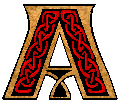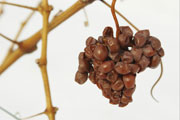German wine glossary
A B C D E F G H I J K L M N O P Q R S T U V W X Y Z
Table Wine
Legally defined category of wine which includes all wines with lower than 14% alcohol content. Coloquially, "wine meant to be enjoyed as a food with meals."
A low quality classification for German wine, essentially 'table wine'.
Tafelwein regions
There are seven regions for Tafelwein (Weinbaugebiete für Tafelwein), three of which are divided into two or three subregions (Untergebiete).
Albrechtsburg
Bayern, consisting of Donau, Lindau and Main
Neckar
Niederlausitz
Oberrhein, consisting of Burgengau and Römertor
Rhein-Mosel, consisting of Moseltal and Rhein
Stargarder Land, which is located in Mecklenburg-Vorpommern, outside the 13 quality wine regions
Tannin
Natural polyphenolic material which has a bitter or astringent taste, making the mouth pucker. Tannin in wine comes from grape skins, stems, seeds (if broken open) and from wood (if the wine was aged in wood).
Tart
Acidic (used as a pleasant descriptor in wine tasting).
Tartar
Crystalline precipitate of crude cream of tartar which sticks to the inside walls of wine tanks after they have been used to store young wines for long periods of time. Also called "argols." See Tartrates.
Tartaric Acid
The most prominent natural acid of grapes, juice or wine. Provides the anion source for "cream of tartar" production as a by-product from wine.
Tartrates
Any of the salts of tartaric acid. For example, cream of tartar (potassium acid tartrate or potassium bitartrate) is one of the potassium salts of tartaric acid. Potassium tartrate is the other. See Tartaric Acid.
Tastevin
A shallow, silver (sometimes gold) wine tasting cup originally used in the Burgundy region of France. Now widely used also by sommeliers in restaurants, if only to make them look more threatening.
Tendrils
Stringlike, coiling growth from nodes of grape shoots which support vines by curling around objects. Tendrils are thought of as sterile or undeveloped grape clusters, since the two have a common origin.
Terroir
French word for earth or soil, used in the special sense of "place," which includes localized climate, soil type, drainage, wind direction, humidity and all the other attributes which combine to make one location different from another. This word is often mis-translated simply as "soil type," giving rise to a great deal of further misunderstanding and a certain amount of interesting and invigorating argument.
Tetrachloroanisole
An airborne bacteria similar to Trichloroanisole, which contaminates the cellar environment instead of the wine cork and is responsible for imbuing the wine with a moldy taint.
Thief
A type of pipette, used for sampling wine from the tops of tanks or barrels.
Thin
Term used in sensory evaluation referring to a wine which lacks body, viscosity, alcohol or sugar.
Tirage
(pronounced teer-ah'-j) Champagne production term describing the first bottling step of the new wine which will eventually turn it into champagne or sparkling wine.
Tischwein
A common, ordinary German wine.
Ton
Clay
Tonneau
A historical standard of measure for wine in Bordeaux, the tonneau is equal to four standard barrels, or exactly 100 cases of wine at twelve 750 ml bottles each. The term is also used to mean an oversize barrel of unspecific size, since no actual container the size of four standard barrels and called a tonneau exists.
Topping
The act of filling a barrel or tank to the very top with liquid, usually wine of the same type and vintage. Contrary to popular belief, topping adds air to the barrel being topped rather than protecting the wine from air.
Traminer for a full list of grapes click HERE
Still grown in France, where it is better known as Savagnin Blanc, and in California but almost everywhere else has been largely replaced by its much more intense and aromatic offspring Gewürztraminer clonal variety. The subject name is still used in Australia as an alias name for Gewürztraminer and, confusingly, is also known there under the synonym name Savagnin Rose.
Translocation
Movement of water and nutrients from one part of a grapevine to another.
Transpiration
Loss of moisture from a vine by evaporation through the leaves.
Trichloroanisole
Known as TCA for short, this is the most common of flaws found in a bottle of wine. Industry standards put the amount of wine with detectable amounts of TCA at anywhere between 3-5%. This chemical compound can occur naturally in cork forests but is most often caused by corks that haven’t been cleaned properly after they are bleached, a process quite common for aesthetic purposes.\r\n\r\nTCA is the cause of corked or corky wines, and causes flavors and aromas of wet cardboard or a musty, wet basement. The fruit in the wines is also muted by TCA. Wines affected by TCA can range from absolutely terrible to only slightly different from a pristine bottle, and it can be difficult in the more subtle instances to tell the difference.\r\n\r\nThe prevalence of TCA has spurred the growth of alternative enclosures such as screw caps and synthetic corks, as nothing is worse than opening a bottle of Bordeaux that has been carefully cellared for ten years only to have it taste like a basement.
Trier
Town located on the Mosel river between the Saar and Ruwer rivers. Therefore, a center for commerce in the German regions of Mosel-Saar-Ruwer.
Trocken
A dry wine , a wine that has less than 9 grammes per litre of residual sugar.
The highest category of nectar-sweet, and expensive, dessert wine produced in Germany. The word means "dry berry selection," which indicates that the Botrytis-raisined berries are individually picked to insure that only fully dried grapes are used for the wine.
Trollinger for a full list of grapes click HERE
(red grape) German name for the Schiava red wine grape originating in the Tyrol region of Italy. It occupies 2.5% of German vineyards
Trunk
The main, vertical structure of a grapevine which supports all the top growth.
Wine villages beginning with 
click the village name for a list of its einzellagen (individual vineyards)
Back to the Top of wine glossary








